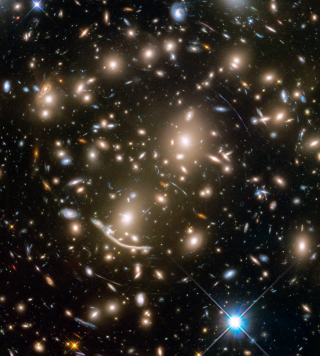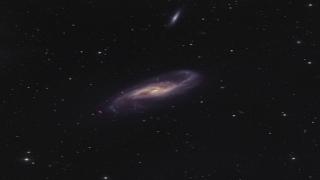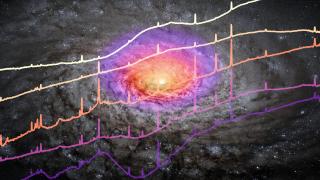Bibcode
Erwin, Peter; Seth, Anil; Debattista, Victor P.; Seidel, Marja; Mehrgan, Kianusch; Thomas, Jens; Saglia, Roberto; de Lorenzo-Cáceres, Adriana; Maciejewski, Witold; Fabricius, Maximilian; Méndez-Abreu, Jairo; Hopp, Ulrich; Kluge, Matthias; Beckman, John E.; Bender, Ralf; Drory, Niv; Fisher, Deanne
Bibliographical reference
Monthly Notices of the Royal Astronomical Society
Advertised on:
4
2021
Citations
23
Refereed citations
22
Description
We present detailed morphological, photometric, and stellar-kinematic analyses of the central regions of two massive, early-type barred galaxies with nearly identical large-scale morphologies. Both have large, strong bars with prominent inner photometric excesses that we associate with boxy/peanut-shaped (B/P) bulges; the latter constitute ∼30 per cent of the galaxy light. Inside its B/P bulge, NGC 4608 has a compact, almost circular structure (half-light radius Re ≍ 310 pc, Sérsic n = 2.2) we identify as a classical bulge, amounting to 12.1 per cent of the total light, along with a nuclear star cluster (Re ∼ 4 pc). NGC 4643, in contrast, has a nuclear disc with an unusual broken-exponential surface-brightness profile (13.2 per cent of the light), and a very small spheroidal component (Re ≍ 35 pc, n = 1.6; 0.5 per cent of the light). IFU stellar kinematics support this picture, with NGC 4608's classical bulge slowly rotating and dominated by high velocity dispersion, while NGC 4643's nuclear disc shows a drop to lower dispersion, rapid rotation, V-h3 anticorrelation, and elevated h4. Both galaxies show at least some evidence for V-h3correlation in the bar (outside the respective classical bulge and nuclear disc), in agreement with model predictions. Standard two-component (bulge/disc) decompositions yield B/T ∼ 0.5-0.7 (and bulge n > 2) for both galaxies. This overestimates the true 'spheroid' components by factors of 4 (NGC 4608) and over 100 (NGC 4643), illustrating the perils of naive bulge-disc decompositions applied to massive barred galaxies.
Related projects

Galaxy Evolution in Clusters of Galaxies
Galaxies in the universe can be located in different environments, some of them are isolated or in low density regions and they are usually called field galaxies. The others can be located in galaxy associations, going from loose groups to clusters or even superclusters of galaxies. One of the foremost challenges of the modern Astrophysics is to
Jairo
Méndez Abreu

Spiral Galaxies: Evolution and Consequences
Our small group is well known and respected internationally for our innovative and important work on various aspects of the structure and evolution of nearby spiral galaxies. We primarily use observations at various wavelengths, exploiting synergies that allow us to answer the most pertinent questions relating to what the main properties of
Johan Hendrik
Knapen Koelstra

Nuclear Activity in Galaxies: a 3D Perspective from the Nucleus to the Outskirts
This project consists of two main research lines. First, the study of quasar-driven outflows in luminous and nearby obscured active galactic nuclei (AGN) and the impact that they have on their massive host galaxies (AGN feedback). To do so, we have been granted time with the Gran Telescopio CANARIAS (GTC) in the optical and near-infrared ranges
Cristina
Ramos Almeida